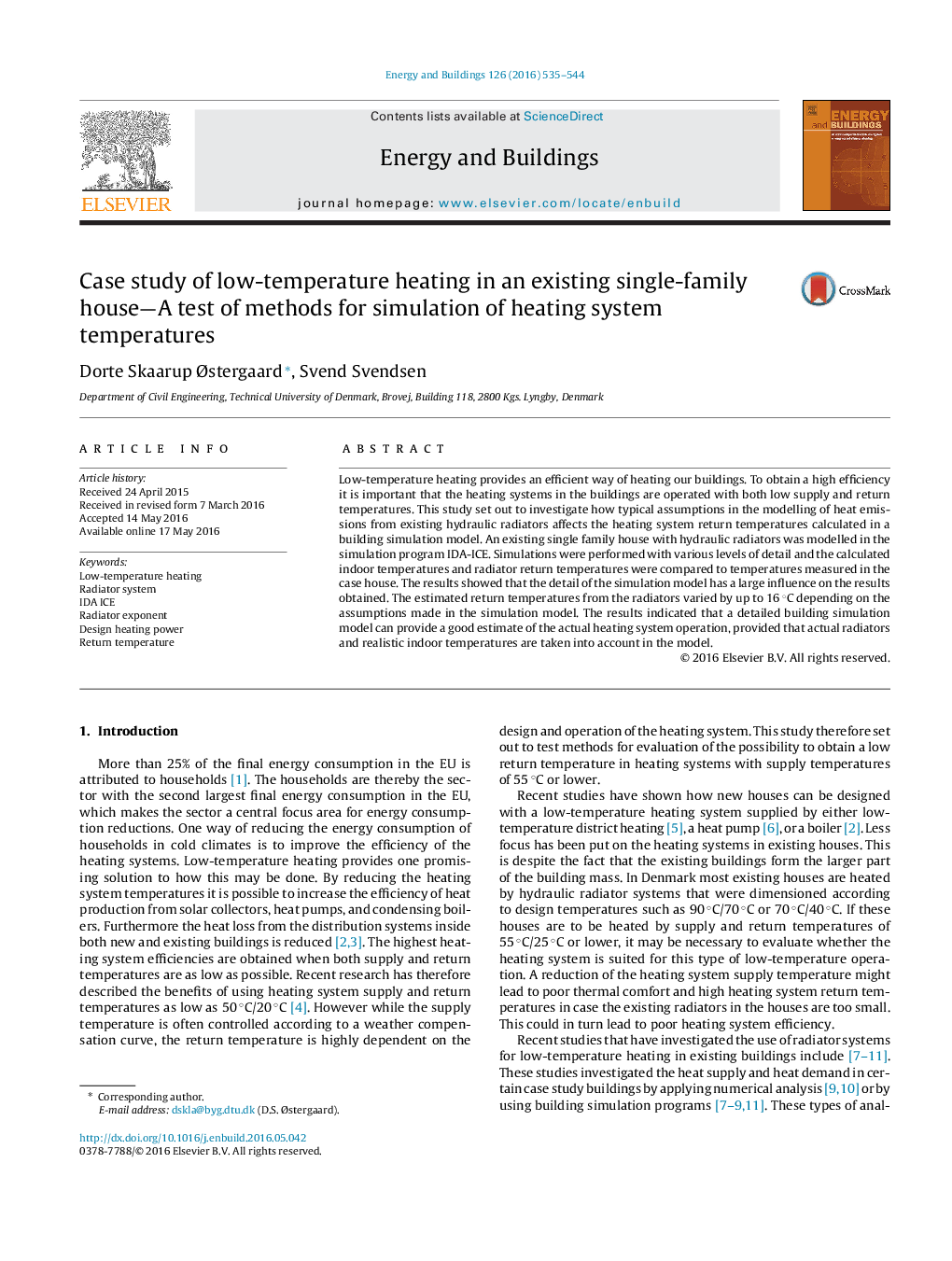| Article ID | Journal | Published Year | Pages | File Type |
|---|---|---|---|---|
| 261956 | Energy and Buildings | 2016 | 10 Pages |
•Simulation models can provide good calculations on low-temperature heating.•Assumptions on indoor temperature set-points greatly affect the results.•Actual radiator types and sizes must be known to provide valid results.
Low-temperature heating provides an efficient way of heating our buildings. To obtain a high efficiency it is important that the heating systems in the buildings are operated with both low supply and return temperatures. This study set out to investigate how typical assumptions in the modelling of heat emissions from existing hydraulic radiators affects the heating system return temperatures calculated in a building simulation model. An existing single family house with hydraulic radiators was modelled in the simulation program IDA-ICE. Simulations were performed with various levels of detail and the calculated indoor temperatures and radiator return temperatures were compared to temperatures measured in the case house. The results showed that the detail of the simulation model has a large influence on the results obtained. The estimated return temperatures from the radiators varied by up to 16 °C depending on the assumptions made in the simulation model. The results indicated that a detailed building simulation model can provide a good estimate of the actual heating system operation, provided that actual radiators and realistic indoor temperatures are taken into account in the model.
